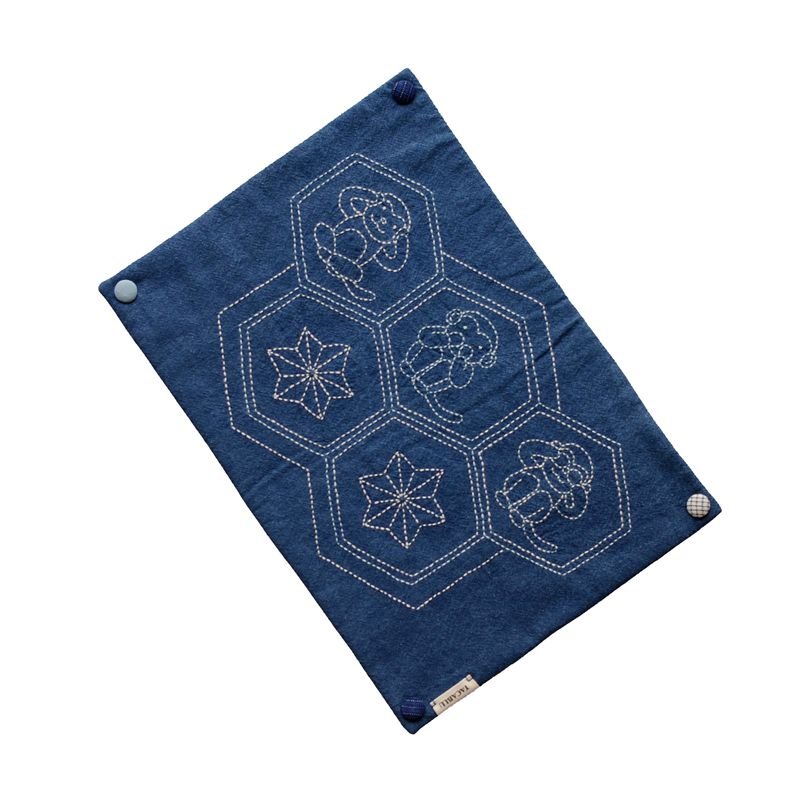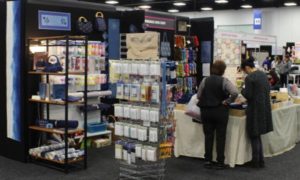
A little Sashiko history
Sashiko is a Japanese folk-art that originated in Japan’s rural north sometime during the Edo period (1615–1868). Having evolved over centuries from an economic necessity, we now appreciate the Little-Stabs as a decorative and attractive art.
The word Sashiko literally means ’Little-Stabs’. It refers to the stitching in repeating or interlocking pattern of one or more layers of cloth with a simple running stitch.
In comparison to Japan’s beautiful silk fabrics, Sashiko is considered a “folk art textile”. This little element of reinforcing fabrics with thread began several hundreds of years ago and has been the foundation of Japanese peasants, martial artists, and even firefighters.
While many Sashiko patterns have originated from Chinese designs, Japanese embroiderers have developed just as many.
Traditionally white cotton thread was used because it created an attractive contrast to the blue indigo fabric. Despite its unique appearance it was not unusual to use different colors for decorative items.
The Idea behind
The primarily use for Sashiko embroidery was to reinforce the hand-crafted clothing of ordinary people who essentially couldn’t afford to discard a single piece of fabric, and consequently reused their fabrics to reinforce old clothing.
The Worn-out garments were sorted out and separated to make new pieces of clothing by utilizing basic running stitches. These new or mended garments greatly improved their quality with these strong embroidery stitches.
The creative part
Sashiko stitching uses mostly geometric patterns that are in fact simple interpretations of the things we discover in nature. Common motives are plants like bamboo and grasses, diamond and polygonal shapes, animals, birds and even snowflakes.
Designs
Most common patterns used in Sashiko stitching

Hemp Leaf, Wild Grass and Seven Treasures

3-Monkey Sashiko Table Runner https://affordable-kind-craft.com.au/product/3-monkey-design-tea-mat/
(A Sashiko stitching project consists of both geometric and pictural designs.)
Sashiko stitching has changed over time and is no longer limited to the traditional indigo colored fabric. Due to a variety of color combinations being used these days, Sashiko Embroidery has become an attractive surface decoration for fabrics and garments.
If you’re new to Sashiko embroidery, we stock a large range of Sashiko samplers as an introduction to Sashiko stitching. We can also print any Sashiko Pattern in any size onto fabric you like. Just send us a message and we will reply shortly to chat about your requirements and how we can help. You certainly won’t be disappointed.


Oh I am so glad I found you.I have placed an order with you today.I’m a keen stitcher .And looking forward to Sashiko and all it involves.I have dabbled already alittle.But keen for more projects to take on.I have been sewing for many years .I never tire of it And always eager to learn new aspects of it .So looking forward to getting to know you and keeping an eye on your website for all the news you offer….
Your new stitching friend .
Jane Jefferies…
Good evening Jane,
First of all, my sincere apologies for late rely!
Our website experienced issues with server for the last week or so and only just got resolved during this weekend!
So great to know you and so happy to know you are a keen stitcher too:-)
I love stitching and applique:-)
I’ve been sewing for approx. 20 years. Started with stitchery and making coaster / banners then a bit more advanced hand embroidery and sashiko 🙂
Fell in love with sashiko by its forever elegant blue and white combo at first as well as earthy indigo look and simple stitching. Once dove in, I realized the depth of this craft can be as deep as ocean. It can carry so much. Yet when I have to sit and wait for Dr or other things, it’s always a sashiko stitching in my hand 🙂 I love it, and appreciate ancestors developed this craft.
I tend to making things that are used everyday and am currently making bags 🙂 Love bags 🙂
Congratulation on starting this craft and have fun 🙂
Your stitching friend
Yan